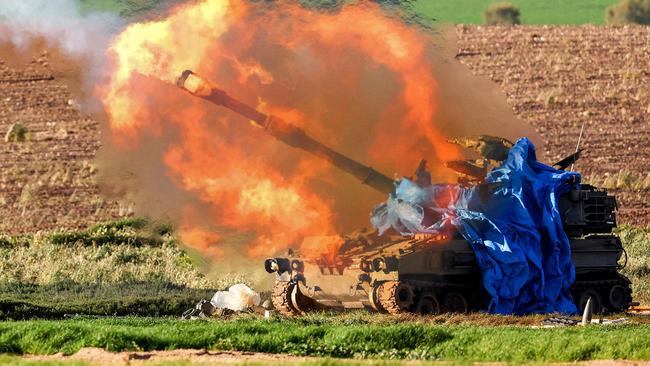Washington pushes for ceasefire deal to end war permanently
Draft agreement is designed to make it harder for Israel and Hamas to resume the conflict.

US negotiators are pushing for a ceasefire deal that could stop the war in Gaza long enough to stall Israel’s military momentum and set the stage for a more lasting truce, according to US and Arab officials familiar with the talks.
Israel and Hamas are considering a three-part deal that would release hostages in Gaza beginning with a six-week ceasefire, according to a draft of the agreement hashed out this week by international intelligence chiefs in Paris. Subsequent phases also would see fighting stop and more hostages let go.
U.S. negotiators, led by CIA director William Burns, argue that it would be difficult for Israel to resume the war at its current intensity after a long pause, the officials said. The US also has told fellow negotiators that Israel was considering the idea of moving to a phase — once all hostages are released — during which major operations would be more limited, including airstrikes on Gaza, the officials added.
The office of Israeli Prime Minister Benjamin Netanyahu didn’t respond to a request for comment on whether it was considering such a prospect.
“We are looking at an extended pause as the goal,” said White House National Security Council spokesman John Kirby. “How long, that’s all part of the discussions, but longer than what we saw in November, which was about a week.”
Mr Kirby said “nobody is doing a touchdown dance” yet, but the administration is hopeful of getting all sides to agree to a halt in fighting that would get hostages out of Gaza and more humanitarian assistance in.
Getting such a deal over the line would require surmounting internal divisions and entrenched differences between the warring sides. The Arab officials said that the obstacles make an imminent deal unlikely, but suggested that if they are overcome then an agreement could be completed within a week to 10 days.
The closed-door meeting in Paris included David Barnea, director of Mossad, Israel’s intelligence agency, who broadly signed off on the deal’s outline, people familiar with the negotiations said. Since the last cessation of hostilities, talks between the two sides had been at an impasse.
The willingness of both sides even to consider the outlines of a deal indicates a small but significant shift in negotiations. It also demonstrates the pressures on Israel and Hamas as the war in Gaza heads into its fifth month and has brought the region to the brink of full-blown conflict.
Israel, determined to eradicate Hamas, faces strengthening calls from some Israelis to conclude the war to get more than 100 hostages back, and a growing fatigue within the Biden administration with the conflict’s toll. Washington’s allies in Arab states are pressing for a permanent end to the war that has cost tens of thousands of lives.
Hamas has said it would only be willing to release the hostages in exchange for an end to the war, something that Israel has said it wouldn’t agree to. The current proposal reflects an attempt to bridge the gap by buying time to negotiate a long-term truce and in the process effectively put a hard stop on the conflict, according to officials familiar with the talks. Hamas indicated to negotiators it would be flexible about the length of the truce so long as it had guarantees for a longer-term ceasefire, they added.
According to a draft of the deal read to The Wall Street Journal by officials involved in the talks, during the first phase Israel would cease all military operations in Gaza including drone surveillance for six weeks while Hamas gathers hostages for release. Civilian hostages including the elderly, the sick and children would be freed. In Gaza, civilians would be free to move around the strip and aid could also reach all parts.
If that phase succeeds, a second would begin with Hamas releasing female Israeli soldiers, the draft says. More humanitarian aid would go into the strip, and the deal would guarantee the operation of hospitals, water services and bakeries.
In the third phase of the potential ceasefire, Hamas would release male soldiers and the bodies of dead hostages, according to the draft. Hamas has also demanded the return of the bodies of Palestinians killed during Hamas’s October 7 attack on Israel, negotiators said.
That final stage of the deal is expected to be the most precarious, as Hamas’s leaders in Gaza could hold on to a small group of hostages as bargaining chips and human shields, while Israeli leaders could refuse to release high-profile Palestinian prisoners.
“That would allow Netanyahu to avoid the political fallout of agreeing to those high-value releases and of ending the war,” said Daniel Levy, a former Israeli negotiator and government official.
The Wall Street Journal



To join the conversation, please log in. Don't have an account? Register
Join the conversation, you are commenting as Logout